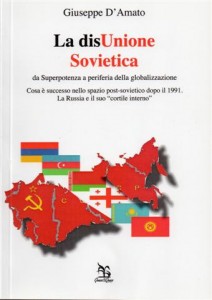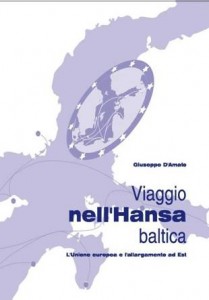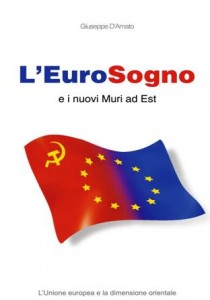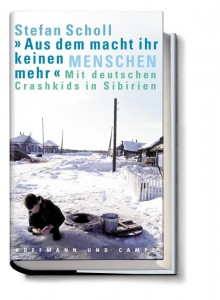All English posts
Economic Outlook – BALTIC STATES, December 2010.
17 Dec 2010Latest Data – December 2010.
The economic crisis in the Baltic states has begun to ease. “Growth prospects will depend on how well these countries can shift to a more export-oriented model,” Mark Allen, senior IMF resident representative for Central and Eastern Europe.
1. Estonia
In 2009 GDP -13,9%. According to Statistics Estonia, by flash estimates, the gross domestic product (GDP) of Estonia increased by 4.7% in the 3rd quarter of 2010 compared to the same quarter of the previous year. Q3 2010: 4.7%; Q2 2010: 3.1%; Q1 2010: -2.0%. This change was influenced by the growth of value added in the manufacturing activity created owing to a vigorous growth of exports.
The European Commission raised in its fresh autumn forecast Estonia’s economic growth forecast to 2.4% for the year 2010 and 4.4% for 2011. In 2012 the economy should grow 3.5%.
The Commission forecasts unemployment at 17.5% this year, 15.1% next year and 13.6% in 2012. Inflation should be 2.7% this year, 3.6% next year and 2.3% in 2012
EURO – “We are at sea in a small boat tied to an ocean liner. In a storm or otherwise, we’d feel better being on board,” is how Estonian finance minister Jürgen Ligi describes his country’s determination to join the euro zone from January 1st, writes Bloomberg.
Estonia’s budget deficit may be about 1.3 percent of gross domestic product this year, Finance ministry said.
2. Latvia
In 2009 the GDP shrank 18%, the worst fall in the European Union. A 7.5 billion euro bailout was led by the International Monetary Fund and the European Commission in 2008. Latvia expects a 0.4% fall in the economy in 2010. In 2011 the growth is expected to be around 3.3%. Government debt will peak at about 50.4 percent of GDP, according to the IMF.
The targeted deficit cut was 280 million lats ($541 million) in the 2011 budget so the expected deficit reduction measures would be worth 2 percent of GDP. Latvia had already taken measures worth 1 billion lats in 2009 and 2010 to cap the deficit. Some of the austerity measures included public sector job losses and wage cuts by up to 50 percent as well as higher personal income tax rates and and a rise in value added tax. In 2011 the targeted budget deficit will be 6% of gross domestic product.
3. Lithuania
In 2009 Lithuania’s economy shrank 14,7%. In 2010 GDP Q3 2010: +0.6%, Q2 2010: +1.1%, Q1 2010: -2.0%. The government forecasts the economy will expand 1.6% in 2010. The 2011 budget was approved by the Lithuanian Parliament on December 9th. The targeted budget deficit will be 5.8% of GDP. Unemployment reached 17.8% in 2010.
Economic Outlook – POLAND, December 2010.
17 Dec 2010LATEST DATA – December 2010.
GDP in 2009 + 1.7%. Poland was the only European Union country to have avoided recession. In 2010 the growth will be of 3.5% – Central Statistical Office (GUS).
The main driving force behind the economy in the second quarter of 2010 was domestic demand, according to the the National Bank of Poland (NBP). The Economy Ministry expects that economic growth will continue to stimulate activity in the industrial and construction sectors. The data shows that the Polish economy is growing faster than the economies of other EU countries except Slovakia (4.1%). The EU Commission’s view is that the Polish economy is driven by manufacturing and exports. The World Bank has recently raised its forecast of Polish GDP to 4.1% in 2011.
Poland’s image has improved as a result of the global financial crisis. The total value of new foreign direct investment in the first half of 2010 exceeded 5 billion euros and was 75% higher than a year earlier, according to NBP data. In the first half of 2010, the Polish Information and Foreign Investment Agency (PAIiIZ) successfully completed negotiations with foreign investors on 29 new investment projects.
Big privatization projects (2010 – 2013)
Government’s financial plan foresees zl.55 billion (13,5 billion euros) to be made. From the first IPOs the sum got is zl.25 billion.
Economic Outlook – RUSSIA, December 2010.
17 Dec 2010LATEST DATA – December 10 th – 17th, 2010
Vladimir Putin, from interview with the nation December 17th, 2010.
GDP – showed growth of 3,8%, indicating a positive trend. A rise in production by the end of 2010 amount to 8,5-8,6%. Russians’ real incomes in 2010 rose by 2 percent a year, but real wages – by 4.2%, pensions – by 44.9%. This past year has created 1 million 200 thousand new jobs, the economy will come pre-crisis level in the first half of 2012.
Finance Minister Alexei Kudrin.
Assuming an oil price of $75 per barrel, Russia would have a deficit of 4.6 percent of gross domestic product, Finance Minister Alexei Kudrin said, while in 2007 — when oil averaged $70 — the country had a 5 percent surplus. “That means we’ve really done some serious back-stepping from the principles of fiscal balance,” he added, Interfax reported.
With state debt of less than 11 percent, Russia will be able to handle any fiscal challenges in 2011, Kudrin said.
The volume of incoming revenues to the federal budget in January – November 2010 amounted to 7 trillion 432.365 billion roubles, expenses – 8 trillion 343.865 billion roubles, the Finance Ministry said in a statement.
Cash budget deficit for 11 months of 2010 amounted to 911.501 billion roubles, or 2.2% of GDP, primary deficit – 724.564 billion roubles (1.8% of GDP).
According to Sergey Ignatiev, head of the Russian Central Bank, in November, 2010, the capital outflow from Russia amounted to 9 billion dollars. Since the beginning of the year this value reached 29 billion dollars.
In November inflation has grown 8.4% since the beginning of the year, fueled by a crippling summer drought that drove food prices higher.
Moscow.
Sergei Pakhomov, acting head of Moscow‘s debt committee, said that the city could sell 500 million euros ($611 million) of debt to international investors in 2011 if conditions are favourable, Bloomberg reported.
Wikileaks. NATO, the Baltics, and Russia.
7 Dec 2010The main task of all military organizations is to be prepared for hostilities or to create the conditions to get the peace showing their strength. During the Cold War the “balance of terror” guaranteed five decades of stability to the world.
WikiLeaks cables has revealed secret NATO plans to defend Baltics from Moscow. The decision to draft them was taken earlier this year at request of the United States and Germany at the Northern Atlantic Alliance headquarters. The White House also offered to beef up Polish security against Russia by deploying naval and air forces to the region.
In those months Washington and Moscow were toughly negotiating the new START agreement and President Barack Obama was promoting a new approach to the former foes. The 21st century challenges need new solutions and an agreement among the most developed countries is desirable. Negotiations with the Kremlin were successful at last, and Russia was later invited to join a section of the western security system at Lisbon’s summit in November.
It would have been surprising whether the NATO had not prepared plans to protect its allies in Eastern Europe. In the cables it is written that this planning is an “internal process designed to make the Alliance as prepared as possible for future contingencies” and “it is not ‘aimed’ at any other country.” Relationships with Russia began to be strained after Saint Petersburg’s G8 summit in 2006. A cyber-attack on Estonia in 2007 was believed to have originated in Russia, and the war broke out in Georgia a year later. Russia’s foreign ministry said it was “bewildered” by revelations edited by the British newspaper The Guardian, but this kind of reaction is part of the game.
“After decades of importing and reverse-engineering Russian arms, China has reached a tipping point: It now can produce many of its own advanced weapons—including high-tech fighter jets like the Su-27—and is on the verge of building an aircraft carrier…Now, China is starting to export much of this weaponry…China is developing weapons systems, including aircraft carriers and carrier-based fighters, that could threaten Taiwan and test U.S. control of the Western Pacific.”
Article – Wall Street Journal December 5th, 2010.
Moldova, a Romanian region in 25 years.
30 Nov 2010“In the next 25 years Romania and Moldova could be united again,” Romanian President Traian Basescu said in an article edited in Romanian newspaper Romania Libera. “EU borders will extend to the Dnestr River, and the democratic development in the region will be an incentive for other countries, such as Ukraine, to join the EU,” the president added. “The Balkans will become part of the EU and NATO within 25 years.”
Confident for the euro, Russia and Europe may join single currency someday in the future. Mr. Vladimir Putin took part in the German – Russian summit in Berlin. The euro has proven itself “a stable world currency,” Russian Prime Minister said. “We have to get away from the overwhelming dollar monopoly. It makes the world economy vulnerable,” Putin added. Earlier in a letter edited by a German newspaper the former President wrote “We should be frank about it: The global economic crisis has revealed both Russia and the EU to be economically very vulnerable.” Mr. Putin suggested to create a free-trade zone.
Mrs. Angela Merkel called that a “vision for the future,” and stressed the need for close economic cooperation as a first step. “But the closer our economies are linked, the easier and the more interesting it will be to adjust also the currency policy,” the German Chancellor said. In the meantime, Mrs. Merkel added, Moscow had to conclude talks to join the W.T.O. Russia, which opened its bid to join the WTO in 1993, is the last major world power not a member of the Geneva-based global trade body.
Mr. Putin expressed criticism to the Third Energy Package. Agreed in 2009, it was designed to liberalize the EU’s energy markets by separating the production and distribution networks of large energy companies to foster more competition. The other element of the package allowed smaller energy companies access to the grids, which had been blocked by the big companies. “Our companies, together with German partners, legally acquired distribution assets in Lithuania,” Mr. Putin said. “Now they are being thrown out there with reference to the Third Energy Package. What is this then? What is this robbery?”
The figure towering over the town of Swiebodzin is 33 meters high – with a three meter golden crown and 16 meter high mound on which the statue stands, the total height is 52 meters, making it higher than the famous Christ the Redeemer statue in Rio de Janeiro, which is 38 meters tall.
The entire construction weighs about 440 tons.
Thousands of believers attended the unveiling and consecration of the white plaster and fiberglass figure, which is the brain child of local priest Sylwester Zawadzki.
“It’s fantastic. That’s the word which perhaps describes best what I can see here,” said an admiring woman at the ceremony on Sunday.
But the imposing figure has divided Poles. Critics say it is too big, bordering on megalomania and that the money could have been better spent.
The authorities in Swiebodzin, a town with a population of 22,000, hope that the majestic figure of Jesus Christ will attract pilgrims and tourists, bringing IN money and enlivening the local market. The figure can be seen by motorists on the Warsaw-Berlin motorway.
Source: PAP
ARTICLE – AFP
NATO Strategic Concept.
US President Barack Obama: the agreement “responds to the threats of our times”.
“For the first time, we have agreed to develop a missile defence capability that’s strong enough to cover all NATO European territory and populations, as well as the United States.”
The document commits NATO members “to defend one another against attack, including against new threats to the safety of our citizens”, without defining a geographical limit to its theatre of operations. The alliance would also seek to “create the conditions” for a world without nuclear weapons, but until that goal was in sight would remain a nuclear-armed organisation.
Polish President Bronislaw Komorowski called the new NATO strategic concept as “satisfactory for Poland”.
Russia.
German Chancellor Angela Merkel: “A former military adversary is now clearly a partner.”
US President Barack Obama: “We look forward to working with Russia to build our cooperation with them in this area (anti-missile Shield) as well recognizing that we share many of the same threats.”
Ratification of the new START weapons treaty.
Obama: “Those who would block this treaty are breaking President Reagan’s rule — they want to trust, but not verify.”
* * *
From the NEW official NATO Strategic Concept. – NATO and RUSSIA –
* PAGE 5. We will actively seek cooperation on missile defence with Russia and other Euro-Atlantic partners;
* PAGE 7-8. In any future reductions, our aim should be to seek Russian agreement to increase transparency on its nuclear weapons in Europe and relocate these weapons away from the territory of NATO members. Any further steps must take into account the disparity with the greater Russian stockpiles of short-range nuclear weapons.
* PAGE 10 – POINT 33 NATO-Russia cooperation is of strategic importance as it contributes to
creating a common space of peace, stability and security. NATO poses no threat to Russia. On the contrary: we want to see a true strategic partnership between NATO and Russia, and we will act accordingly, with the expectation of reciprocity from Russia.
* PAGE 10 – POINT 34 The NATO-Russia relationship is based upon the goals, principles and
commitments of the NATO-Russia Founding Act and the Rome Declaration, especially regarding the respect of democratic principles and the sovereignty, independence and territorial integrity of all states in the Euro-Atlantic area. Notwithstanding differences on particular issues, we remain convinced that the security of NATO and Russia is intertwined and that a strong and constructive partnership based on mutual confidence, transparency and predictability can best serve our security. We are determined to:
• enhance the political consultations and practical cooperation with Russia in areas of shared interests, including missile defence, counter-terrorism, counter-narcotics, counter-piracy and the promotion of wider international security;
• use the full potential of the NATO-Russia Council for dialogue and joint action with Russia.
“Our relationship with our European allies and partners is the cornerstone of our engagement with the world, and a catalyst for global cooperation. With no other region does the United States have such a close alignment of values, interests, capabilities and goals…
As an alliance of democratic nations, NATO ensures our collective defence and helps strengthen young democracies. Europe and the United States are working together to prevent the spread of nuclear weapons, promote peace in the Middle East and confront climate change…
We are each other’s closest partners. Neither Europe nor the United States can confront the challenges of our time without the other…
NATO will also transform itself in Lisbon with a new Strategic Concept that recognizes the capabilities and partners we need to meet the new threats of the 21st century. This must begin by reaffirming the lifeblood of this alliance — our Article 5 commitment that an attack on one is an attack on all…
We can resume practical cooperation between NATO and Russia that benefits both…we can make it clear that NATO sees Russia as a partner, not an adversary. We can deepen our cooperation on Afghanistan, counter-narcotics and 21st century security challenges — from the spread of nuclear weapons to the spread of violent extremism. And by moving ahead with cooperation on missile defense, we can turn a source of past tension into a source of cooperation against a shared threat…”
Full text – Barack Obama – President of the United States – Before Meetings in Lisbon.
Welcome
We are a group of long experienced European journalists and intellectuals interested in international politics and culture. We would like to exchange our opinion on new Europe and Russia.
Categories
- Breaking News (11)
- CIS (129)
- Climate (2)
- Energy&Economy (115)
- EU Eastern Dimension (85)
- Euro 2012 – Sochi 2014 – World Cup 2018, Sport (43)
- Euro-Integration (135)
- History Culture (198)
- International Policy (261)
- Military (74)
- Interviews (18)
- Italy – Italia – Suisse (47)
- Odd Enough (10)
- Poland and Baltic States (126)
- Religion (31)
- Russia (421)
- Survey (4)
- Turning points (4)
- Ukraine (176)
- Российские страницы (113)
Archives
- November 2020
- October 2020
- September 2020
- August 2020
- July 2020
- May 2020
- April 2020
- March 2020
- January 2020
- December 2019
- November 2019
- October 2019
- September 2019
- August 2019
- July 2019
- June 2019
- May 2019
- April 2019
- March 2019
- February 2019
- December 2018
- November 2018
- October 2018
- September 2018
- August 2018
- July 2018
- June 2018
- May 2018
- April 2018
- March 2018
- February 2018
- January 2018
- December 2017
- November 2017
- October 2017
- September 2017
- August 2017
- July 2017
- May 2017
- March 2017
- January 2017
- December 2016
- November 2016
- October 2016
- September 2016
- July 2016
- June 2016
- May 2016
- April 2016
- February 2016
- January 2016
- November 2015
- October 2015
- September 2015
- June 2015
- April 2015
- March 2015
- February 2015
- January 2015
- December 2014
- November 2014
- October 2014
- September 2014
- August 2014
- July 2014
- June 2014
- May 2014
- April 2014
- March 2014
- February 2014
- January 2014
- December 2013
- November 2013
- October 2013
- September 2013
- August 2013
- July 2013
- June 2013
- May 2013
- April 2013
- March 2013
- February 2013
- January 2013
- December 2012
- November 2012
- October 2012
- September 2012
- August 2012
- July 2012
- June 2012
- May 2012
- April 2012
- March 2012
- February 2012
- January 2012
- December 2011
- November 2011
- October 2011
- September 2011
- August 2011
- July 2011
- June 2011
- May 2011
- April 2011
- March 2011
- February 2011
- January 2011
- December 2010
- November 2010
- October 2010
- September 2010
- August 2010
- July 2010
- June 2010
- May 2010
- April 2010
- March 2010
- February 2010
- January 2010
- December 2009
- November 2009
- October 2009
- September 2009
- August 2009
Our books




